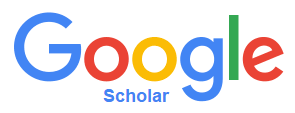Aplicación de la Programación Lineal para optimizar el costo de una dieta balanceada
DOI:
https://doi.org/10.18050/ingnosis.v4i1.2061Palabras clave:
Dieta, Función objetivo, Programación lineal restricciones, Variables de decisiónResumen
Introducción: El objetivo fue determinar cómo la programación lineal optimizó el costo de la dieta del alimento balanceado para pollos en la empresa avícola.
Material y métodos:El diseño de la investigación fue preexperimental de tipo descriptivo, la muestra fue por conveniencia, se trabajó con elalimento balanceado utilizado en campaña de 56 días para un total de 1 344000 pollos BB. En el desarrollo de la investigación se recabó información de los insumos del alimento para determinar las variables de decisión, se midieron los componentes nutricionales para determinar las restricciones y se identificaron las variables de decisión sujeta a las restricciones para determinar la mezcla óptima a mejor precio. Los softwaresutilizados fueron WinQSB, XLStat, Excel, IBM SPSSv20.
Resultados:Losdiagramasde Ishikawa y Pareto determinaronlas causas del alto costo del alimento balanceado, se utilizó la información del costo de la segundacampaña 2017, la que representalos insumos de mayor abastecimiento: maíz 4332263,96kg, afrecho 60270,78kg, torta de soya 755599,39kg, soya integral 1387355,63 kg, harina de pescado 111539,89kg, melaza 160302,77kg, carbonato de calcio 74235,99kg, fosfato dicalcio 128352,16kg, DL metionina 14243,71kg, lisina HCL 8264,73kg, Sal 30892,57kg, bicarbonato sódico 38185,97kg, premix aves 8402,45kg, coccidios tato 3543,52kg, prom. de crecim7087,07kg, CL colina 3543,52kg,como variables de decisión a un costo total de S/9569491,34; la solución básica factible resultó:3,13%energía metabolizada, 19,75%proteínas, 6,02%grasa, 3,00%fibra, 1,15%lisina, 0,90%M+C, 0,96%calcio, 0,46%fosforo disponible, 0,21%sodio, 250,00%Na+K-Cl, teniendo una contribución de S/3 491834,00, con un ahorro del 36,49% y asegurando el costo en S/6 077657,34.
Discusión:Los resultados concluyeronque la programación lineal asegura el suministro de nutrientes al mínimo costo en la avícola.
Descargas
Descargas
Publicado
Número
Sección
Licencia

Esta obra está bajo una licencia internacional Creative Commons Atribución-NoComercial 4.0.











